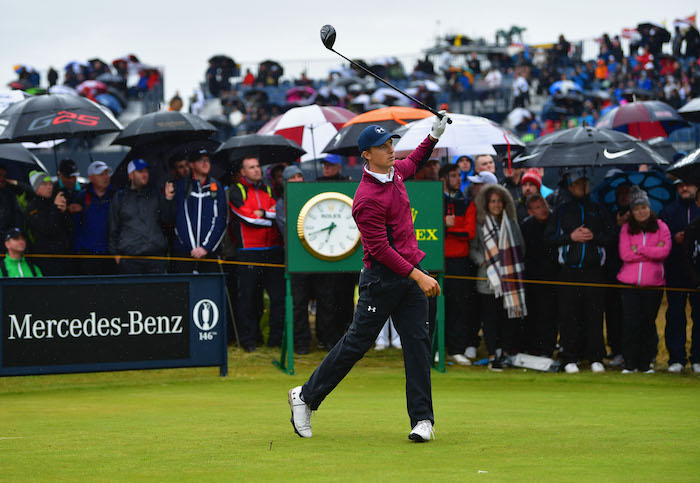What’s the big deal with distance? After the two most recent Majors, there’s been far too much chatter about lengthening courses to limit low scores, writes WADE PRETORIUS.
Not sure if it was after Justin Thomas made eagle on his 54th hole at Erin Hills that the critics came out firing about the course being too easy, too short, too gimmicky, too much of everything but a brutal test that gets the world’s best playing over par.
Maybe it came with Branden Grace’s majestic Saturday 62, when similar hysteria followed.
So what’s the deal with distance? That seems to be the biggest gripe with cranky journalists and armchair critics – the current crop of players hit it too far, too straight, the technology is too good etc, etc. It’s a bit tiring.
A US-based golf writer chipped in with a tweet calling for a course that needs to be 9,000 yards or maybe even 10,000 yards long. The replies, and there were many, sparked a lot of interest. But I saw a few responses that gathered more traction than others.
First, Colt Knost, a PGA TOUR player, called out the critic and said that players would still light up courses that were 9km long, had big fairways and soft greens. He said that, after first tweeting ‘you seriously have no idea what your talking about!’. Harsh but fair?
Next? Jon Curran. Another tour player. He pointed out that the first -9 in US Open was achieved at the longest US Open course in history.
Justin Thomas – yes the one who shot 63 at the US Open – entered the debate. His reply was simple. ‘Firm and fast courses equal high scores, not big courses. Don’t know how many more examples are needed to prove it … soft conditions and wide fairways equal low numbers.’ He would know, wouldn’t he?
I agree that there’s a lot of noise out there on social media, and even more so when history is made or when the world’s best tear courses apart specifically designed to put players back in their places.
How easy is it to forget that Dustin Johnson, Rory McIlroy and Jason Day all missed the cut at Erin Hills? And while Brooks Koepka battered and bruised the course into submission, it tested the vast majority of a seriously skillful field.
And what about Royal Birkdale? Scoring on Sunday wasn’t exactly tremendous after Grace’s Saturday exploits. And what about Friday’s carnage in the wind and the rain? Wasn’t that enough for those who crave the suffering of the world’s best?
You can’t control the weather – only eight players went under par on Friday, and about 40% were under par on the final day. That’s about all you can ask when greens keepers and their staff set it up in a way to produce a good test for golf, with enough birdies and big scores to keep fans glued to their TV screens.
Both the recent Majors produced worthy winners, great viewing and just the right amount of drama – isn’t that all you could ask for?
While technology in equipment will continue to improve, maybe the golf bodies could look at limiting the balls? Other than that, leave the courses as is, I say. Players are not the same as they were in the 60s, 70s and 80s. They are not necessarily better, but rather different. A different outlook on professional sport – nutrition, psychology, gym – and coaching is probably on another level for the masses.
Regular golfers are not battering courses, despite the continued enhancements in technology, and from personal experience, my best-ever round came at a course where just a few months before I had shot 99 and took most of the post-round punishment. Should that course be ripped up and started again because of my 23-shot swing between those rounds?
Friends weren’t asking if that particular track was long enough, they were more interested in whether or not I had credible witnesses for my somewhat miraculous feat.
Photo: Stuart Franklin/Getty Images








